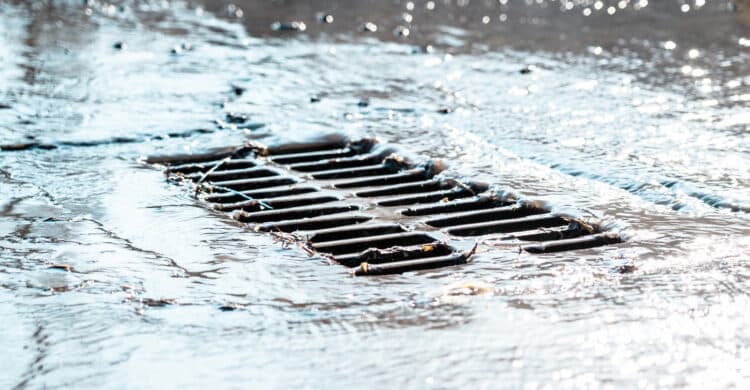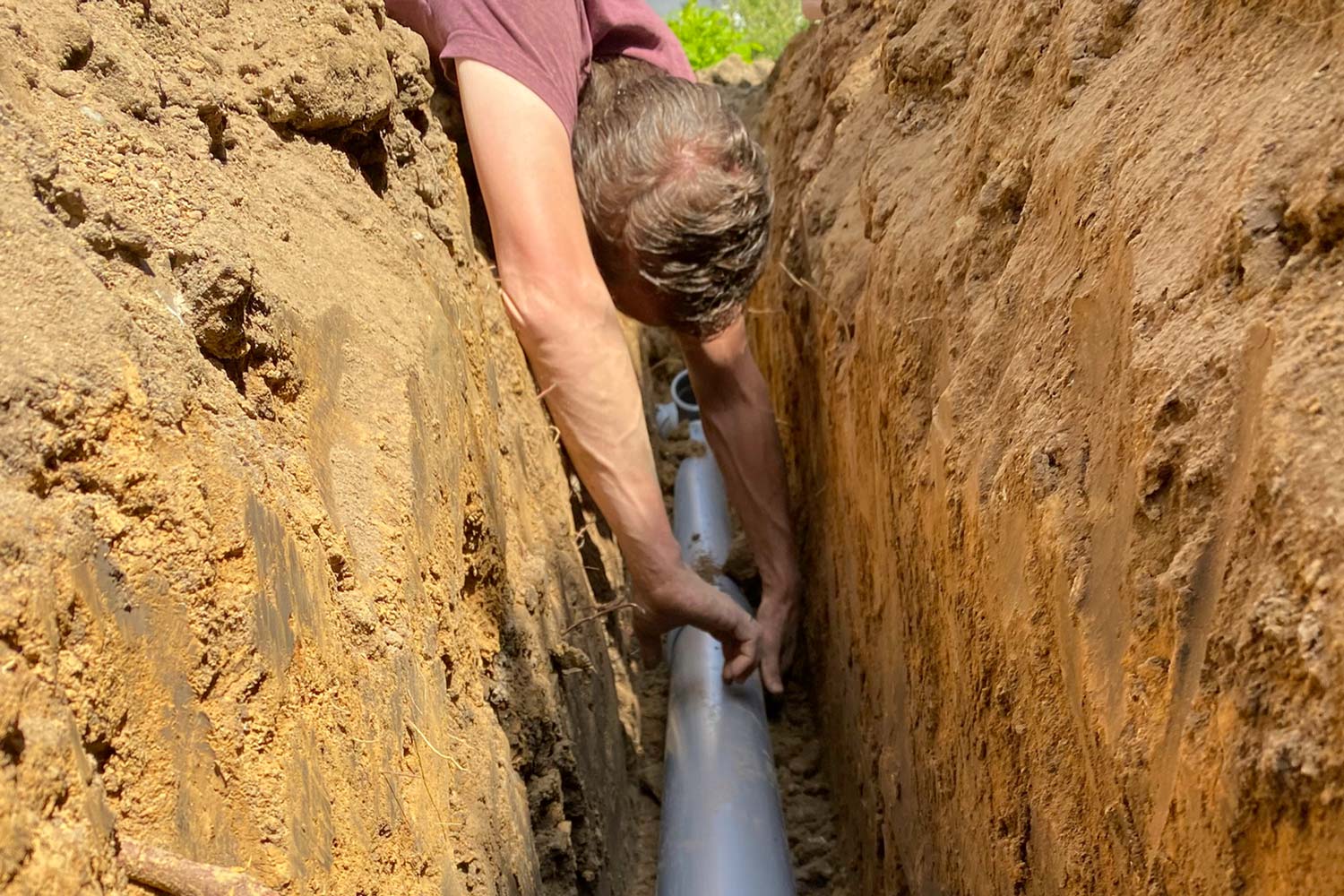
The Role of Professional Contractors in Storm Drain Repair
A sinkhole appears overnight or water pools ominously in places it shouldn’t; these are signs that demand immediate attention. It’s more than just inconvenient—it’s potentially disastrous.
The average cost to resolve issues after a failure can skyrocket, especially when you consider potential damage to property and disruptions in daily operations for businesses. Regular maintenance isn’t just necessary; it’s financially sensible too.
If your morning commute was ever disrupted by an unexpected detour due to road flooding, there’s likely an overwhelmed or damaged storm drain behind it. The intricacies involved in repairing such vital infrastructures are many and require professional handling every step of the way—from inspection with sophisticated sewer cameras to high-powered cleaning jets clearing away years of sediment build-up.
What Is Storm Drain Repair?
Storm drain repair is a bit more involved than you might initially think. Most storm drain repair jobs involve removing the asphalt or concrete pavement from the basin, repairing or replacing the storm drain or catch basin and repairing the pavement and drain grate. A reputable company will work with you to find a time to fix the problem to minimize the impact the repairs will have on your day-to-day business.
Difference Between Storm Drain and Sewer System
Storm drains and sewer systems are separate underground networks. Storm drains are designed to collect and transport stormwater runoff from rain and melting snow, while sewer systems are responsible for carrying wastewater from homes and businesses to treatment facilities. Obvious signs of a broken storm drain include sinkholes, cracked pavement, and structural instability around the drain area. Other indicators may be slow draining or standing water, especially during dry weather.
Problems Caused by Damaged Storm Drains
When a storm drain pipe cracks or breaks, the leaking water penetrates and saturates the surrounding soil, which ultimately leads to water build-up that floods basements, roads, parking areas and even ground-level businesses and office structures.
How to Tell If Your Storm Drain Needs Repair
What should you be on the lookout for to protect your commercial property from a broken storm drain—and the problems that come with a broken drain? Learn more about sunken and broken storm drains below.
Regular Inspection of Drain Grating
Regularly inspecting the drain grating can help identify potential issues early on. Look for cracks, corrosion, or any signs of damage that could indicate a problem with the underlying storm drain system. While it may be tempting to try and unclog a storm drain yourself, it’s best to avoid DIY methods. Improper techniques can cause further damage to the pipes and create a larger, more expensive problem.
Calling a Professional for Cleaning
If you notice slow draining or standing water around your storm drain, it’s best to call a professional for a thorough cleaning. They have the proper equipment and expertise to safely remove any blockages without damaging the pipes.
Storm Drain Repair Process
Inspecting the Damage
The first step in the storm drain repair process is to inspect the extent of the damage. This often involves using a sewer camera to get a visual of the inside of the pipes and identify the exact location and severity of the issue. Before any repairs can be made, the storm drain needs to be thoroughly cleaned. This is typically done using high-powered water jetting to remove any debris, sediment, or blockages that could interfere with the repair process.
Repairing or Replacing Pipes
Depending on the extent of the damage, the storm drain pipes may need to be repaired or replaced entirely. This can involve excavation to access the pipes, or trenchless methods like CIPP lining for a less invasive solution.
Restoring the Storm Drain
Once the pipes have been repaired or replaced, the storm drain area needs to be restored. This includes filling in any holes, repaving surfaces, and ensuring the drain grating is properly secured.
Choosing a Qualified Company for Commercial Storm Drain Repair
Due to the varying tasks involved with a storm drain repair job, it’s best to work with a company that is qualified for commercial storm drain repair work. Take a look at customer testimonials and work samples and ask the company you’re speaking to about their experience dealing with each phase of a commercial storm drain repair job before you hire them. Taking these steps early on in the process can help you avoid the costly mistake of picking an unqualified or inexperienced contractor to handle such an important job. When choosing a company for a commercial storm drain repair job, it’s important to look for one with experience in large-scale projects. They should have a proven track record of completing similar jobs in a timely and efficient manner.
Proper Equipment and Techniques
A qualified storm drain repair company will have invested in the proper equipment and training to handle any size job. This includes sewer cameras for inspections, high-powered water jetting for cleaning, and specialty clam shell trucks for excavation.
Positive Reviews and Reputation
Take the time to research potential companies and read reviews from past clients. Look for a company with a positive reputation in the industry and a history of satisfied customers.
Preventing Future Storm Drain Issues
One of the best ways to prevent future storm drain issues is to ensure proper installation techniques are followed from the start. This includes using high-quality materials, properly grading the area around the drain, and making sure all connections are secure.
Regular Cleaning and Maintenance
Regular storm drain cleaning and maintenance can go a long way in preventing clogs and identifying potential issues early on. Having a professional routinely inspect and clean the drains can extend their lifespan and prevent costly repairs down the line.
Implementing Stormwater Management Systems
Implementing comprehensive stormwater management systems can help reduce the strain on storm drains and minimize the risk of damage. This can include things like permeable pavement, rain gardens, and detention basins to control and filter stormwater runoff.
Conditioned Air Systems Can Lend a Hand
So, you’ve ventured beneath the city streets with us today, discovering just how critical storm drain repair is to our urban life. It’s not just about preventing pools of water or unsightly sinkholes; it’s about saving serious cash and dodging disruptions that can throw off an entire day—or more.
We’ve seen that storm drains aren’t just holes in the ground but complex systems needing expert care from inspection to repair. Remember, ignoring them isn’t cost-effective; it’s a risk no one should take.
This isn’t doom and gloom—it’s empowerment through knowledge! Knowing when and how to act can keep your property safe and operations smooth and Conditioned Air Systems can lend a hand! Feel free to reach out to us today if you require storm drain repair assistance.

